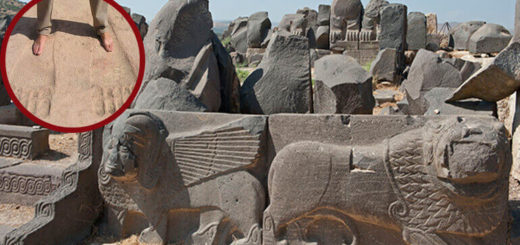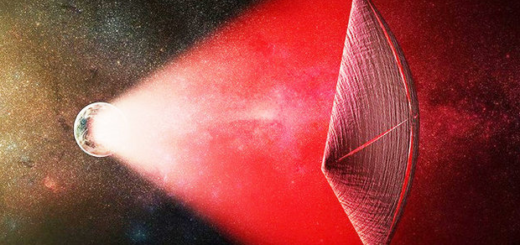5 ‘Strange’ Skulls That Science Cannot Explain

Nearly in every corner of the globe, someone has managed to find or excavate mysteries skulls that defy explanation.
Whether these mysterious skulls are of human origin or not, is an ongoing debate among skeptics, researchers and those who firmly believe that the mysterious skulls, which do not resemble any human species, are in fact of extraterrestrial origin, and as such, can and should be interpreted as the ultimate evidence that proves that our planet has been visited by beings, not from Earth.
This is why in this article, we bring you of the most amazing skulls ever discovered on Earth that hint to a possible extraterrestrial origin.
The Paracas skulls
In the barren landscape of the Peruvian desert, in 1928, archeologist Julio Tello made one of the most mysterious discoveries when he uncovered a complex and sophisticated graveyard under the harsh soil of the Paracas desert.
Tello discovered a set of controversial human remains that would forever change how we look at our ancestor and our origins. The bodies in the tombs had some of the largest elongated skulls ever discovered on the planet, called the Paracas skulls. The Peruvian archeologist discovered over 300 mysterious skulls which are believed to be at least around 3000 years old.
As if the mysterious shape of the skulls wasn’t weird enough, a recent DNA analysis performed on some of the skulls presented some of the most enigmatic and incredible results that challenge everything we know about the origin and human evolutionary tree.
The cranium of the Paracas skulls is are least 25 % larger and up to 60% heavier than the skulls of regular human beings. Researchers firmly believe that these traits could not have been achieved through head bindings as some scientists suggest. Interestingly, the mitochondrial DNA, which is inherited from the mother, showed mutations that were unknown to any man, primate or animal found on planet Earth. The mutations present in the samples of the Paracas skulls suggest that researchers were dealing with a completely new ‘human-like being’, very different from Homo sapiens, Neanderthals or Denisovans.
The Rhodope Skull
Discovered by a 38-year old resident of Plovdiv, ever since its finding, no one has been able to offer conclusive details about what the mysterious skull is. Dimiter Kovachev, the Director of the Paleontology Museum in Asenovgrad, is positive that the discovery is no fossil and has no analogy” or resemblance to any hominid skull known to science.
The anomalous skull weighs only 250 grams, it has six mysterious cavities which according to UFO enthusiasts, could belong to the creatures ‘sensory organs’.
According to the skull formation, the creature to which the skull belonged could have had up to six eyes, or another set of ‘unknown organs’. The most mysterious feature of the Rhodope Skull is that it lacks a mouth.
The Sealand Skull
It is one of the most controversial artifacts discovered in recent years. The Sealand Skull has raised numerous questions that science cannot find an answer to. Strangely, few researchers have shown interest in analyzing the mysterious artifact, perhaps because they are afraid what they might find out, something that could change the way we look at human origins and our entire history.
It was in 2010 that the skull was first examined at the College of Veterinary Medicine in Denmark. The researchers concluded that they were not able to solve the mystery nor provide anything that would explain to what species it belonged to.
“Although it resembles a mammal, certain characteristics make it impossible to fit into the Linnaean Taxonomy”, scientists said. Since researchers were unable to provide further details and the question regarding the Sealand Skull were many, the skull was sent to the Niels Bohr Institute in Copenhagen. Carbon dating revealed that this mysterious being lived between 1200 and 1280 BC.
Prehistoric Bizon Skull with bullet hole
The remains of the bison that has a bullet hole in the cranium are displayed at the Museum of Paleontology in Moscow, you can see a perfectly round hole that was supposedly caused by the impact of a projectile launched at high-speed.
Researchers believe, even though they never found the remains of the projectile, that the hole in the cranium was caused by a bullet caliber similar to the ones we use today. Even more strangely, this animal is native to the region of Yakuzia in Eastern Siberia and lived in the region over 30,000 years ago! So what did we miss in history? Is it possible that highly advanced civilization existed thousands of years ago? Before our “modern history”?
Russian Alien skulls
According to reports by Russian newspapers, the mysterious skulls were found in a cave on Mount Bolshoi Tjach nearly two years ago by a group of explorers led by ethnographer Vladimir Melikov.
According to Melikov, the creature of one of the skulls was unlike anything known to man, and it walked on two legs. Melikov states that among the most mysterious features of the skulls is the absence of cranial vault and jaws.
The eye sockets are unusually large having facial features resembling humans. Even when compared with the skull of a bear, it’s hard to think that you do not have in your hands the remains of an alien creature, said Melikov.
Paleontologists in Moscow weren’t too excited when they received photographs of the mysterious skulls, they merely acknowledged that the skulls are unlike anything they had ever seen, suggesting that the skulls could have been submerged and exposed to sand for long periods of time, something that could have altered the shape of the skulls, but, if this were the case, how can we explain the nearly identical ‘deformations’ in both skulls which seem to follow similar patterns?
Even when compared with the skull of a bear, it’s hard to think that you do not have in your hands the remains of an alien creature, said Melikov.



 Creators of mankind
Creators of mankind Description of “Tall white aliens”
Description of “Tall white aliens” Where they came from?
Where they came from? About hostile civilizations
About hostile civilizations The war for the Earth
The war for the Earth “Tall white aliens” about eternal life
“Tall white aliens” about eternal life Video: “Nordic aliens”
Video: “Nordic aliens” Aliens
Aliens Alien encounters
Alien encounters The aliens base
The aliens base UFO
UFO Technology UFO
Technology UFO Underground civilization
Underground civilization Ancient alien artifacts
Ancient alien artifacts Military and UFO
Military and UFO Mysteries and hypotheses
Mysteries and hypotheses Scientific facts
Scientific facts


















